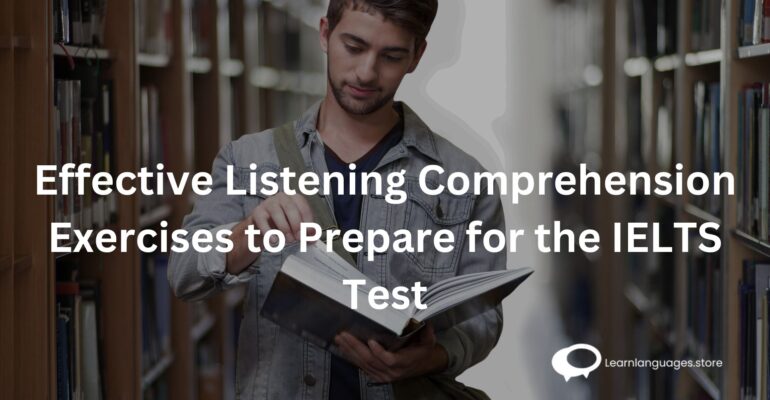The Key Differences Between Academic and General Training Versions of the IELTS Exam
The Key Differences Between Academic and General Training Versions of the IELTS Exam
Introduction
Are you preparing for the IELTS exam? If so, you probably know by now that there are two versions – the Academic Version and the General Training Version. But do you know their core differences and which one suits your requirements the best? Finding the answers to these questions is crucial for a beneficial study scheme.
Overview of the IELTS exam
The IELTS exam, or International English Language Testing System, is a test designed to estimate your proficiency in English, whether you plan on studying, working, or migrating to an English-speaking country. It contains four elements: Listening, Reading, Writing, and Speaking, and offers two distinct versions.
* Academic Version caters to those who want to further their post-graduation studies or want to take up a professional course in English-speaking countries.
* General Training Version is ideal for individuals who plan to migrate, work, or enroll in secondary education.
Importance of understanding the key differences between Academic and General Training versions
Knowing the distinctions between the Academic and General Training versions of the IELTS Exam is a critical step towards building an efficient study plan. Each version serves a specific purpose, and hence, requires a different preparation approach. This knowledge will guide you in making a strategic study plan ensuring that your preparation aligns with your ultimate goal.
Understanding the Academic Version
Purpose and Target Audience
The Academic version of the IELTS exam is designed especially for students planning to study at undergraduate or postgraduate levels in countries where English is the main language of communication. This includes pursuing a bachelor or post-graduate degree in universities of countries like America, Canada, UK, Australia, etc.
Structure and Content of the Academic Version
Delving into the specifics, the Academic IELTS exam is made up of four sections: Listening, Reading, Writing, and Speaking. The Listening and Speaking components are the same for both versions. But where it diverges is the Reading and Writing sections.
The Academic version has three long reading passages with tasks that test a vast range of reading skills including reading for main ideas, reading for details, skimming, understanding a logical argument, recognizing writers’ opinions, and so on.
The writing component also comprises two tasks, with Task 1 involving describing visual data like a graph or a chart, and Task 2 requiring an essay response to an argument or problem. The writings revolve around topics of general interest found in an academic and intellectual context.
Sample Question Types and Examples
An array of diverse question types can be seen in the Academic version, from multiple choice, identifying information, matching headings, diagram labeling to summary completion. For instance:
– In Reading, you might be given a passage on ‘The Effects of Urbanization’ and asked to match certain statements to the correct section of the text.
– For Writing Task 1, an example could be: “The graph below shows the changes in employment rates in different sectors in the USA from 2000 to 2020. Summarize the information by selecting and reporting the main features…”
Remember, practice is the key to crack this version. So don’t fret and start your preparations with determination and focus. Good luck!
Understanding the General Training Version
Purpose and target audience
The General Training version of the IELTS exam, commonly abbreviated as IELTS GT, is specifically designed for individuals intending to reside in English-speaking countries for purposes other than education. These purposes may include work, migration or training programs. It is a key requisite for visa applications in nations like Australia, the United Kingdom, and Canada. The audience for this version ranges from skilled professionals to migrants who need to prove their English proficiency for residency purposes.
Structure and content of the General Training version
Unlike the Academic version, the General Training Version focuses on practical communication skills in a broad social and workplace context. It consists of four sections:
• Listening: A 30-minute test with four sections of increasing difficulty, intended to test your ability to understand basic and detailed factual information.
• Reading: Contains three sections with topics centered on general interest, which are likely to come across everyday life in an English-speaking country.
• Writing: Contains two tasks that require letter writing and essay writing, with an emphasis on the practical application of English.
• Speaking: A 15-minute interview-like test, exploring the candidate’s proficiency in spoken English across a range of contexts.
Sample question types and examples
The General Training Version presents very naturalistic scenarios. For example, in the Writing section, you might be asked to write a letter of complaint to a landlord about problems in your apartment, or in the Reading section, you could be given a section from a brochure to read and answer questions on. The Speaking section generally encourages free conversation, with topics ranging from your hobbies to discussing a favorite holiday and so forth. These types of scenarios help IELTS GT better assess your language skills in a real-world context.
Differences in Writing Section
The writing section of the IELTS exam varies significantly between the Academic version and the General Training version. While both need to be completed within 60 minutes, the task types and the scoring criteria differ.
Task types in the Academic version
In the Academic version of the IELTS, the Writing section is split into two tasks. Task 1 requires you to describe a graph, table, chart or diagram in at least 150 words. This involves explaining data, outlining important trends, comparing and contrasting information, or explaining a process. Task 2, on the other hand, involves writing an essay in response to an argument, viewpoint or problem in at least 250 words.
Task types in the General Training version
The General Training version shifts its focus a tad towards more regular writing skills. In Task 1, you’ll be asked to write a letter, either formal, informal or semi-formal, which can be based on a real-life situation. Task requirements range from writing to friends, complaining to a business or explaining something to a friend. For Task 2, you will have to write an essay, like in the Academic version, but the subject matter is usually of general interest and less abstract.
Tips for approaching the writing section in both versions
For both versions, it is crucial to structure your response effectively and maintain a clear focus throughout. Practice paraphrasing as this is an important skill for IELTS writing. Moreover, make sure your ideas are well-developed and examples are relevant to the question. Here are a few additional tips:
– Always take time to plan your answer before you begin writing.
– Make sure your writing has clear paragraphs.
– Learn to manage your time effectively to cover both tasks.
– Review your writing for errors before submitting it.
Remember, the idea isn’t just to write lots, but to express an organised line of thought convincingly and naturally. Getting familiar with the types of tasks expected in the version of the exam you’ll be taking, and practicing these, is key to achieving a high score.
Differences in the Reading Section
When it comes to the IELTS exam, the reading section varies notably between the Academic and General Training versions. One of the most substantial differences can be witnessed in the types of passages given.
Passage Types in the Academic Version
In the Academic version, test-takers typically encounter three long complex passages. These passages are extracted from books, research papers, journals, and sometimes newspapers. The content could be about almost anything, from science to humanities. Some key features that make this version challenging are:
– The use of advanced and technical vocabulary.
– Often, passages can contain complex graphical data like diagrams, charts, or tables.
Passage Types in the General Training Version
Contrastingly, in the General Training version, there are two to three short simple passages and one longer, more complicated passage. These passages generally deal with topics of general interest and are sourced from advertisements, guidebooks, booklets, or newspapers. A few characteristics that distinguish the General Training version are:
– The language used is simpler and less technical.
– Passages often include factual information without complicated images or graphs.
Strategies for Tackling the Reading Section in Both Versions
Regardless of whether you’re preparing for the Academic or General Training version, there are a few general strategies applicable to both.
– Begin by having a quick glance at the entire passage to get a sense of what it’s about.
– Highlight keywords and phrases in the questions and look for their synonyms in the passage.
– Practice time management, remember you generally have a minute per question.
Nevertheless, remember that the key to conquering the reading section of the IELTS exam lies in consistent practice and good comprehension skills. So, whether it’s the Academic or General Training version, make sure you familiarize yourself well with the format and practice with diligence.
Differences in Listening Section
The listening section is a significant part of the IELTS exam, whether you opt for the Academic or General Training version. However, the audio materials and extract contexts differ in each test, designed to gauge your understanding of various spoken materials and accents.
Audio Materials in the Academic Version
In the Academic version of the IELTS, the audio materials are typically related to specific higher education context. You might be tasked with listening to a lecture or a scholar’s discussion, with the topic often being complex and university standardized. It could be about scientific research, historical analysis, or a deep-dive into socio-cultural issues. The key here is to follow the main arguments, identify the speaker’s view, and answer related questions with high precision.
Audio Materials in the General Training Version
On the other hand, the General Training version has a slightly different focus. The auditory materials in this are more of a social and survival context, they replicate everyday conversations or simple monologues you could experience in an English speaking country. Examples could include shopping directions, public announcements, or a casual chat about local events. The goal here is to assess the candidates’ comprehension of common references and colloquial language.
Techniques for Improving Listening Skills for Both Versions
Regardless of the version that suits your needs, both require proficient listening skills, which can be improved with the following tips:
• Regularly listen to the BBC or other English news channels to familiarize yourself with various accents
• Make it a habit to listen to podcasts or watch documentaries about subjects that interest you
• Practice active listening by taking notes as you listen
• Practice with official IELTS listening materials to familiarize yourself with the exam format
• Try to listen and understand different types of talks and discussions – from formal academic discussions to informal chats.
These strategies can help bridge the gap between the listening contexts and the overall IELTS scoring performance. Remember, practice makes perfect!
Differences in Speaking Section
Let’s dive into the aspect of the International English Language Testing System (IELT) that often creates the most anxiety: the Speaking section. Despite this section being identical in terms of duration and format in both the Academic and General Training versions of the exam, the topics and tasks can vary significantly.
Topics and Tasks in the Academic Version
In the Academic version, the Speaking section tends to focus more on classroom-related and scholastic topics. You might be asked to discuss a lecture you found interesting or provide an opinion on the use of technology in education. This section includes three parts: an introduction and interview, a long turn where you speak continuously for two minutes on a given topic, and a two-way discussion.
Topics and Tasks in the General Training Version
Contrastingly, the General Training version leans towards more practical, everyday language skills. The topics can revolve around work, shopping, or general interests. You could be tasked with discussing your favorite hobby or the best holiday you’ve ever had. The format, however, remains the same as the Academic version: an introduction and interview, long turn, and discussion.
Preparation Tips for the Speaking Section in Both Versions
Regardless of the IELTS version you’re preparing for, there are a few key tips that can help
• Practice speaking English every day and aim for clarity, not speed.
• Familiarize yourself with a wide range of topics.
• Listen to English content to understand different accents.
• Simulate the IELTS speaking exam environment by timing your responses.
• Know the assessment criteria.
In conclusion, understanding the nuances between the Academic and General Training versions of the exam is crucial to a successful speaking section. Remember, effective communication is your goal, not sounding like a native speaker. So relax, prep well, and break a leg!
Preparation Tips for Academic Version
Before diving into the intricate details, it’s essential to grasp that the Academic version of the IELTS exam is primarily intended for those who are about to pursue higher learning in an English-speaking university or college. Here are some preparation tips to help you ace the Academic version of the IELTS exam.
Recommended Study Materials
• English Grammar in Use by Raymond Murphy: This book is an excellent resource for mastering grammar rules and structures.
• Collins Vocabulary for IELTS: This book provides you with a range of vocabulary required for potential topics asked in the test.
• Barron’s IELTS Superpack: Combining the IELTS preparation materials into one exhaustive kit, Barron’s Superpack is indeed a treasure trove with a multitude of practice exercises and answers.
Time Management Strategies
Proper time management plays a key role in the IELTS preparation. Develop a study timetable that is realistic and adheres to it strictly. This doesn’t mean studying continuously without breaks. Instead, incorporate both active study and relaxing periods to optimise learning. Also, try to simulate exam conditions – set a timer while practicing to become proficient at managing your time during the actual exam.
Practice Exercises and Resources
Applying your learned skills in practice exercises is highly beneficial. Websites like the British Council’s ‘Road to IELTS’ and ‘IELTS Liz’ are packed with free practice exercises and resources for every section of the test. The more you practice, the more comfortable and confident you’ll become. So remember to incorporate regular practice exercises into your IELTS preparation strategy.
Preparation Tips for the General Training Version
Preparing for the General Training version of the IELTS exam requires a unique approach compared to the Academic version. To help you maximize your study efforts, we’ve put together some key tips, study materials, time management strategies, as well as practice exercises and resources.
Recommended Study Materials
When it comes to study materials for the General Training version of the IELTS exam, you will need to target your efforts towards understanding basic survival English applicable in a broad social and educational context. Key resources include:
– Official Cambridge IELTS exam preparation books. These contain real test papers from previous years and are excellent for getting a feel for the exam.
– English language newspapers, magazines, and even everyday materials like advertisements, or guides. These can help you understand common vernacular and informal language.
Time Management Strategies
Time management is a critical factor in your IELTS success. It’s important to dedicate adequate time daily to study, dividing it among the four sections – reading, writing, listening, and speaking. Consider creating a study schedule and sticking to it. Also, try timing yourself while answering practice questions to develop speed without compromising accuracy.
Practice Exercises and Resources
Finally, continual practice cannot be understated. Here, you can focus on:
– Online resources, such as the IELTS website, or apps like BBC Learning English, offering free lessons and exercises.
– IELTS practice tests online or in your study book. These simulate the actual exam format and help identify areas where improvement is required.
Remember, preparing for the IELTS exam is a journey. With patience, consistent effort, and the right resources, you’ll certainly be on track to success!
Conclusion
As we wind up, it’s apparent that the better you understand the IELTS exam, the higher your chances of success. And one way to enhance such an understanding is by comprehending the key variations between the Academic and the General Training versions.
Importance of Choosing the Right Version
The comprehensive exploration of the differences between the IELTS General Training and Academic tests unequivocally highlights the significance of choosing the right version. Not only will the accurate choice enable you to better tailor your preparation efforts, but it will also ensure that the test results serve your specific goals—be it for academic, professional, or immigration purposes. Simply put, selecting the right IELTS version is a crucial step towards the fulfillment of your language proficiency objectives.
Key Takeaways and Final Thoughts
To recap, the main elements that differentiate the Academic and General Training versions of the IELTS exam are the intended audience, the purpose, and the content of the Reading and Writing modules. Preparation tips differ for each version, hence understanding these differences is key to maximizing your performance.
Finally, keep in mind that regardless of the version you choose, maintaining regular practice, staying patient, and seeking expert guidance can significantly boost your IELTS scores. So, make an informed decision, gear up your preparation, and get ready to ace the IELTS!
Contact LearnLanguages.store
Reaching out for clarity about the IELTS exam, its versions, preparation tips or anything else you’d like to know? At LearnLanguages.store, we’re always ready to assist you.
Our Communication Avenues
Our primary aim is to ensure that you are fully prepared for either your IELTS Academic or General Training version. We’re here to answer your queries and provide insight through different channels. You can:
– Send us an email at support@learnlanguages.store.
– Reach out via our social media platforms on Facebook, Instagram, or Twitter.
– Drop a comment on our blog posts.
Your journey to mastering English and smashing your IELTS exam is our biggest concern. Let’s engage, and together, let’s make your IELTS preparation journey successful.
Learn Languages Store
Vashi,
Email: services@learnlanguages.store










